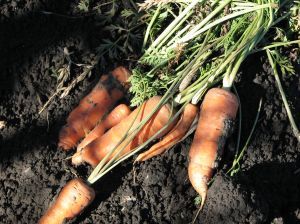Have you always wanted to grow your own fresh vegetables but are not exactly sure how to get a garden going? Starting a vegetable garden will definitely take some effort, but once you’ve got your plot established, you will have a wonderful spot to grow vegetables year after year with much less effort.
If you’ve got a little extra room in your yard, consider adding a vegetable garden plot. Many have grown successful vegetable gardens in just a little amount of space, but the bigger the garden, the more you will be able to grow and enjoy.
Here are a few steps you can take to create a garden plot in your very own yard.
Select a Spot
When you choose a spot for your garden plot, make sure it’s an area that will receive a lot of sun. Look for an area of the yard with a southern exposure. If your garden does not receive full sun exposure, you will not have success with your vegetables.
Test the Soil
Along with good sunlight, your vegetables will also need good soil. Your vegetables will grow using the nutrients in the soil, so it’s important to have soil with the right amount of nutrients. A soil test will test for levels of phosphorus, potassium and nitrogen. All three of these nutrients are necessary for optimum plant growth.
You can purchase a simple soil test at your home store or send a soil sample into a soil testing lab. While a store bought soil testing kit will give you your results more quickly, a professional test will be more thorough and will be customized to the plants you are interested in growing, and even provide specific recommendations for amendments. It will cost around $20, can be done through your local extension office, and be returned to you in 10-14 days.
Map it out
Decide which vegetables you want to grow in your garden. The easiest way to do this is by identifying vegetables your family will eat. Even though radishes are easy to plant and grow quickly, don’t plant them if no one will eat them.
Using a piece of graph paper, draw out your garden plot to scale. Make a note of where the sun is coming from. Taller growing plants should be on the North end of the plot so they won’t shade other plants. If space is an issue, try growing some plants vertically. For example, choose pole beans over bush beans and stake tomatoes so they don’t take up as much room.
Consider planting a few “companion” plants that will attract beneficial bugs to your garden. Marigolds will attract ladybugs, which will eat harmful aphids. Bush Beans, Pole Beans, Carrots, Corn Cucumber, Radish, Turnips are good companion plants for peas. Bush Beans, Cabbage, Onion, Sage are good companions for beets. More companion plant combinations are available on line by searching “companion plants.”
Prepare the Ground
After your soil has been tested and your garden mapped out, prepare the soil by adding any needed amendments. Clear the area of any plant growth and turn the soil over with a shovel then rake it smooth. Doing this job by hand is a great work out, but if you prefer, you can rent a small tiller from your local home store and save your back. The Mantis tiller is a great way to cultivate your garden because it’s lightweight, but pretty powerful. A small tiller will also make mixing in soil amendments much easier.
After the soil has been worked, water it daily for a week or so. You will see small plants growing, even though you haven’t planted a single thing yet. These are weeds. The weed seeds have been lying dormant in your ground and by turning the dirt and watering it, they are now growing. Give the weeds a week or two to pop up, then either pull them by hand or spray them with a product like Round-up.
After this, do not till or stir up the soil again or you will just uncover more weed seeds. There will certainly be more weeds in your garden through out the growing season, but this exercise will give you a head start on your battle with them.
Plant
When the soil is ready and the weeds are gone, it’s time to plant. Follow the instructions on the back of each seed packet. You will notice each packet has information about planting time, seed depth and thinning. Planting in rows is an easy way to plant some seeds. You can create a row to plant seeds using a garden hoe.
If you use two stakes with garden twine tied between them the length of your row, you will be able to quickly and easily hoe straight rows. Just pound the stakes into the ground where you want the first row and hoe along the string. Then move the stakes over to the next row and continue.
Plant your seeds and cover the row using your hoe. Water your seeds well and keep them all wet until they pop out of the ground. If the seeds dry out during germination, they will die and never grow.
Once the seeds have sprouted, you can hoe a watering furrow right next to the plant row. This will make watering simple as all you will have to do is turn your hose onto a low flow, place it at the top of your watering furrow, and let the water slowly flow down the furrow, soaking the soil. This kind of watering will ensure your plants are watered deeply and well.
Take care of your vegetables as they mature through out the growing season. When you pick your first fresh green bean or your first plump, ripe tomato, all the hard work will have been worth it.
